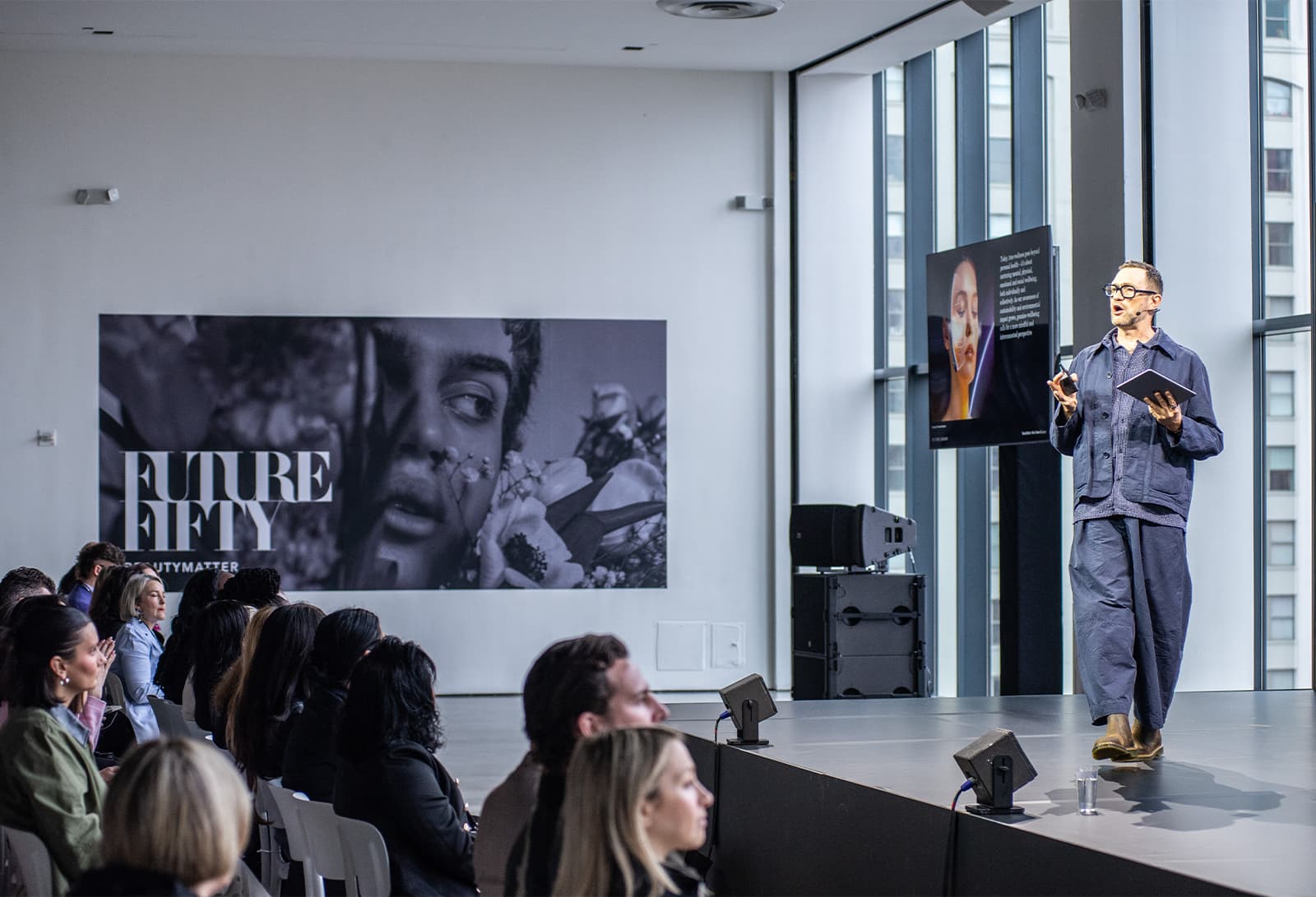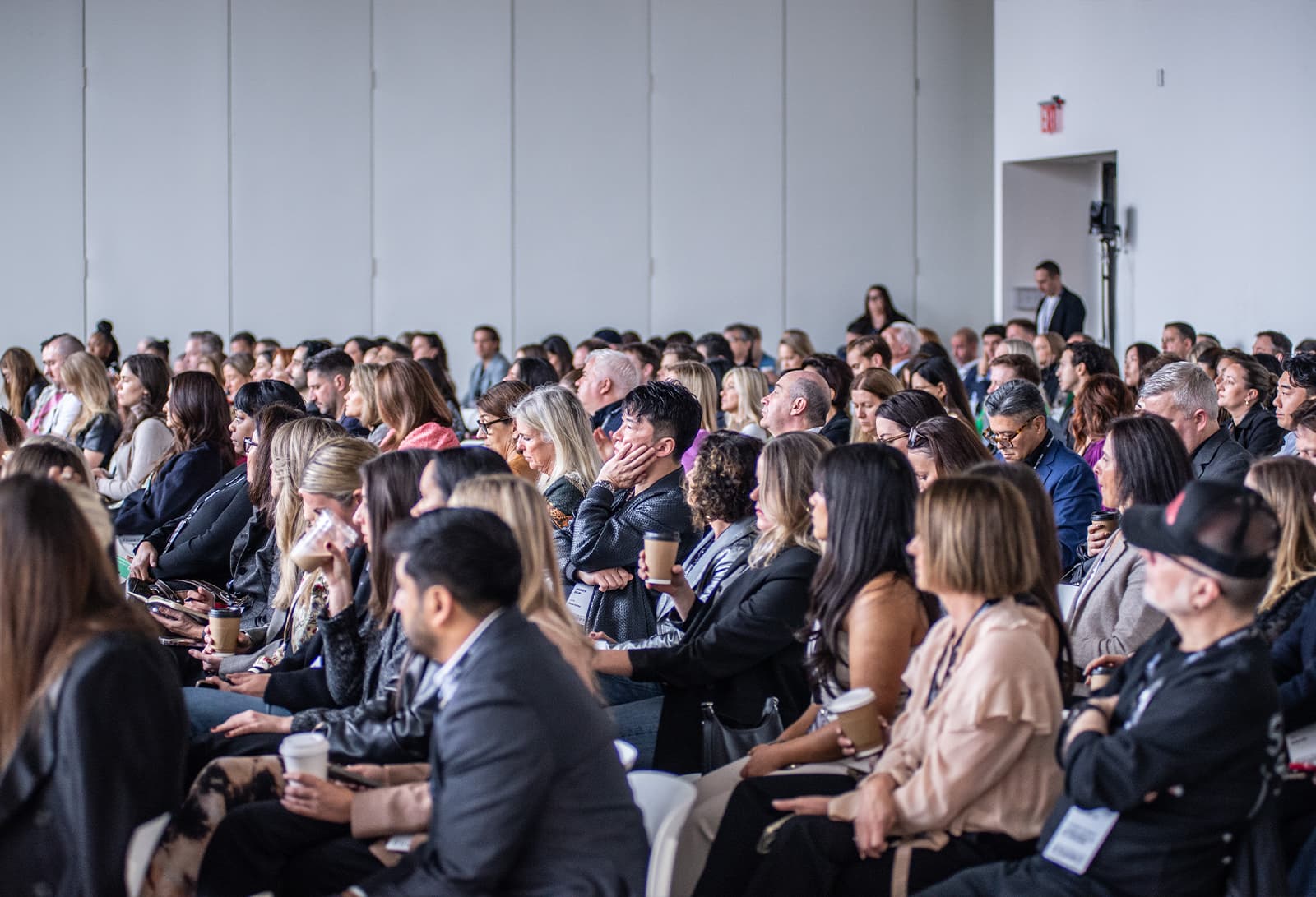In a world increasingly shaped by uncertainty, contradiction, and rapid transformation, the ability to anticipate what’s next has never been more valuable or elusive. Across industries, particularly luxury, the future is no longer linear. Instead, it is fragmented, fluid, and deeply emotional. For beauty brands, this complexity isn’t a challenge to overcome, it’s an opportunity to lead.
At the 2025 BeautyMatter FUTURE50 Summit, cultural futurist Chris Sanderson, co-founder of The Future Laboratory, delivered a compelling vision for what lies ahead. Far from traditional trend forecasting, his talk offered a cultural futures lens, inviting beauty leaders to think systemically, ethically, and imaginatively about change. As luxury evolves, beauty is positioned to become its guiding force.
Beauty at the Center of Luxury’s Wellness Revolution
Today, the luxury industry is undergoing a profound shift driven by health, well-being, and emotional resonance. True wellness has expanded beyond personal health; it now encompasses mental, physical, emotional, and social well-being, both individually and collectively. In this new paradigm, beauty is no longer a siloed sector; it’s becoming the blueprint for what luxury aspires to be over the next decade.
Beauty is poised to play the same catalytic role fashion did in the 1990s: a driver of cultural momentum and a benchmark for consumer expectations. As Sanderson noted, “We’re moving into a world that is more polycultural, polymorphous, and polygendered … That’s a world we need to design for—not in five years, but right now.”
This speaks directly to luxury’s transformation. Modern consumers, especially younger generations, are no longer driven by static status symbols; they’re driven by values, fluid identity, and emotional alignment. Beauty, with its intimate connection to self-expression, health, and community, is uniquely equipped to meet those demands.
The Total Experience
Luxury consumers are now collecting values and experiences, not just products. Beauty brands can take cues from fashion’s evolution, shifting from transactional spaces to immersive, story-rich environments. From in-store sanctuaries to community-driven pop-ups, experiential design is where beauty can lead.
“Stores can be sanctuaries,” Sanderson suggested. “Spaces where people feel safe, welcomed, and understood.” In the age of climate anxiety, digital fatigue, and mental overwhelm, this human-centered approach is no longer optional—it’s strategic.
Prestige Personalization
Scarcity is no longer the currency of luxury—personalization is. Today’s affluent consumers seek products and services that reflect their health goals, ethical priorities, and identity. In Sanderson’s words, “They’re not interested in binaries. They don’t want to be put in boxes. And they expect the brands they engage with to recognize that fluidity.”
Beauty, already a leader in personalization—from skin diagnostics to tailored fragrances—is now expected to deliver on deeper, value-aligned customization. This means moving beyond skin tone or hair type to include emotional states, lifestyle contexts, and belief systems.
The Art of Becoming
Surface-level aspirations are giving way to a more holistic and health-centric view of beauty. According to Euromonitor, 50% of people now define beauty as “looking healthy.” This shift from aesthetics to well-being mirrors a deeper cultural movement, which Sanderson called the transition “from status to substance.”
He explained, “Younger consumers are less interested in conventional markers of success and more invested in emotional intelligence, authenticity, and social accountability.”
In this landscape, beauty isn’t just about products; it’s about helping people become who they want to be—emotionally, physically, and socially.


Science as Standard
As longevity and healthspan become top priorities for high-net-worth individuals, beauty is intersecting more directly with biotech, precision health, and life-extension services. From epigenetic testing to longevity supplements, the “science of self” is reshaping consumer expectations.
“We need to design systems, products, and experiences that are regenerative—not extractive,” Sanderson said. The luxury beauty brands that thrive will be those that blend emotional intelligence with scientific credibility—offering solutions that are both clinically validated and culturally resonant.
Rebalancing the Beauty Equation
To stay competitive in an increasingly crowded market, luxury beauty brands must adopt a 360-degree approach. Aesthetics are no longer enough. Transparency, ethics, sustainability, and cultural fluency are all now essential pillars of desirability.
“We’re entering a trust economy,” Sanderson explained. “And in that economy, ethics and sustainability aren’t ‘nice to haves.’ They are non-negotiables.”
This demands radical transparency around sourcing, formulation, brand purpose, and long-term impact. Consumers can spot inauthenticity a mile away. As Sanderson warned, “If you’re not walking the walk, they will call you out … or walk away.”
Optimism as Strategy
Despite the uncertainty of the times, Sanderson’s message was ultimately one of hope. “The future isn’t something that happens to us,” he said. “It’s something we create—through our choices, our values, and our imagination.”
In a moment where anxiety dominates headlines, optimism is not a luxury—it’s leadership. Brands that offer meaning, joy, and forward-looking narratives will not only survive but also shape the next era of luxury.
“We need more than foresight,” Sanderson said. “We need brave thinking. We need creative courage.”
Perhaps most importantly, Sanderson urges the audience to remember that beauty, at its best, is about more than just looking good. “The brands that will thrive,” he concluded, “are the ones that bring joy, meaning, and optimism into people’s lives. Because, in the end, beauty is about possibility.”
New Codes of Luxury—Key Takeaways: